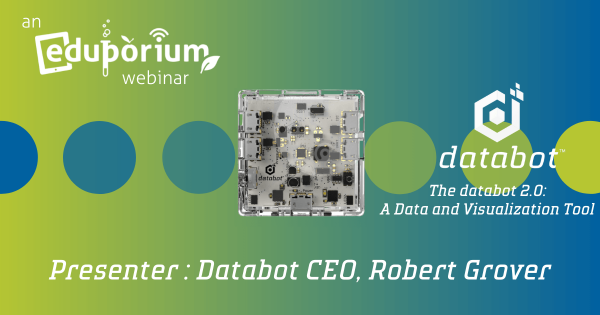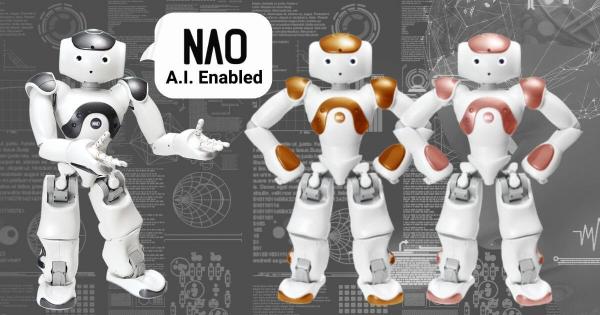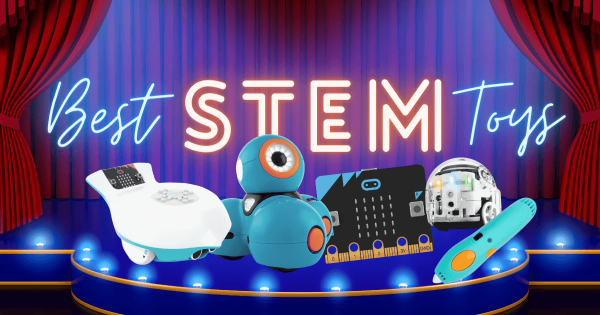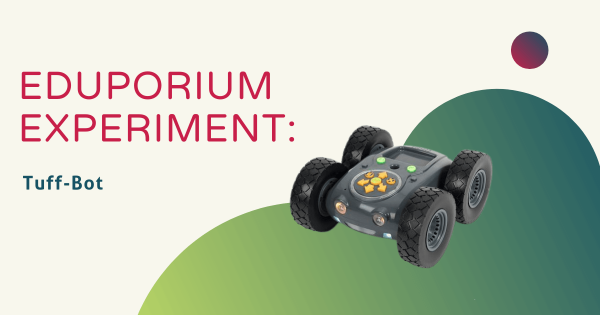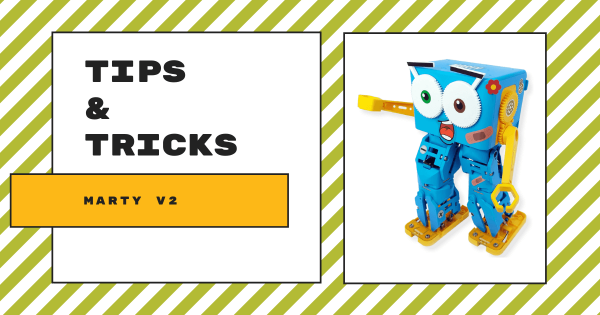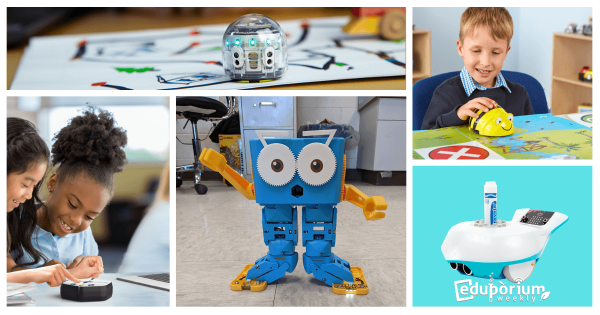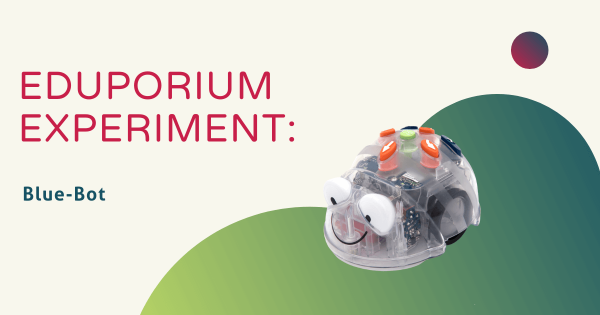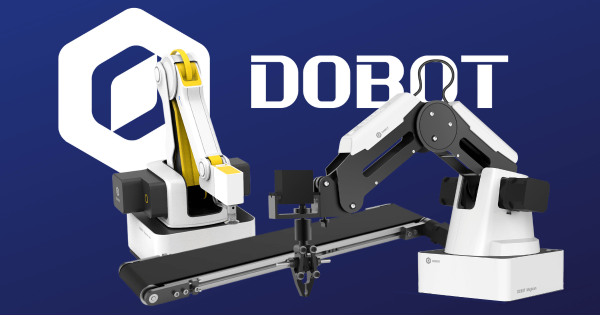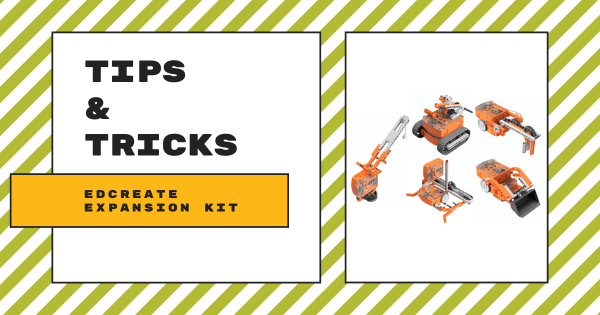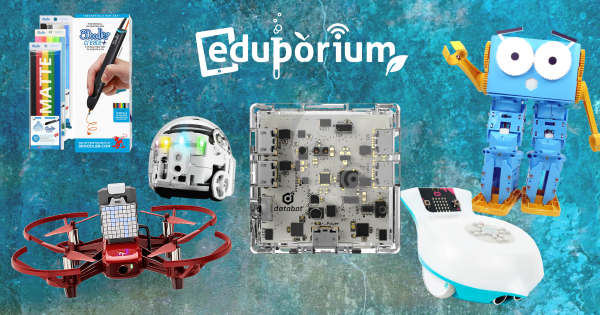Among other updates to the databot 2.0, it has a more powerful processor, a drag-and-drop coding platform, and some new links to machine learning. Robert gave a super informative overview of the databot 2.0 and we could definitely feel that excitement from the educators in attendance—many of whom immediately saw educational value in this data collection tool.
Robotics
Some of the most popular paths and effective approaches to preparing students for their future involve using robotics tools. A significant subsection of STEM education, coding robots and other types of programmable devices enable a large percentage of the STEAM learning that occurs in our schools. Using educational robotics tools, students from Pre-K to college can develop key coding skills. This is largely because, among these various robot kits, many are compatible with various programming languages. So, beginning in Pre-K, a child might use the Cubetto Robot in screen-free coding activities. Then, they might move on to the Bee-Bot or Blue-Bot for CS experiences that are slightly more complex. And, by the time they're in kindergarten or first grade, they have a legitimate foundation and they're ready to continue developing fluencies in coding, problem solving, and even computational thinking.
One reason robotics in education is so effective is due to various advances in robotics equipment for schools. Beyond introducing the absolute basics of coding early on (and without a screen), students can then progress to one of the most basic forms of coding, which you might know as Blockly. So many robotics tools incorporate the Blockly coding language along with their corresponding programming environment. In fact, the Ozobot Evo, Root Robot, Edison Robot, and Dash Robot are among the most popular elementary robotics tools. These help children build on coding and technology knowledge as they prepare for the next step—text programming. In text coding, they can use tools like the databot 2.0, NAO Robot, and most of the others we've mentioned. And, through these experiences, they can develop STEM skills in a tangible way while using robotics tools to do so.
-
NAO Robot Programming And The NAO AI Edition
Unlike with the previous NAO V6, the AI Edition is more suited for students in higher education or any who have enrolled in CTE pathways programs in high school. It is designed to help these students explore a variety of more advanced technology concepts in addition to the crucial SEL connections educators could establish using the previous NAO Robot versions. -
Best STEM Toys For Building Key Skills
While STEM learning wasn’t always top priority in the pandemic-disrupted years, some educators continued doing their best to provide students with these opportunities in different learning environments. And, in that time, we have seen how many top classroom EdTech tools also double as beneficial STEM toys for individual exploration. So, here are a few of our favorites. -
Eduporium Experiment | Tuff-Bot Robot From Terrapin
When it comes to both programming and power, the Tuff–Bot is among the most powerful educational robotics tools. It has four oversized wheels with high-quality tread that allow it to travel over a variety of indoor and outdoor surfaces. And, though it is similar to the Bee–Bot and Blue–Bot Robots, a key difference is that students can create much more -
Tips & Tricks | Marty The Robot V2 From Robotical
Since it’s a Scratch-compatible robot, the Marty V2 is super accessible for students with different CS experience levels. Scratch is a graphical coding language, which means your students don’t necessarily need to have prior experience with coding to program their Marty. Then, there’s its Scratch Jr. and Python compatibility—making the Marty V2 viable in all K-8 grades. -
Eduporium Weekly | Coding Tools For Each Grade Level
From kindergarten through high school, coding helps all students develop real-world hard and soft skills—even if they are not planning on pursuing a computer science career. Plus, getting started isn’t intimidating either and, in fact, introducing programming often involves some extremely simple CS tools in kindergarten before working in those with more STEM possibilities. -
Eduporium Experiment | Blue-Bot And The Blue-Bot App
Designed to closely resemble the tried-and-true Bee–Bot coding robot, the Blue–Bot Robot from Terrapin provides ECE teachers and students with an upgraded learning experience. It’s still simplistic enough for kids to use as part of Pre–K, kindergarten, and early elementary lessons but also features added Bluetooth functionality to ensure for progressive skills development. -
Get To Know The Dobot Software And Educational Robot Arms
Consisting of robot arms, AI kits, and accessories, these technologies help inject additional real-world relevance and rigor into your high school STEM and CTE programs. From the Dobot Magician and AI kits to their conveyor belts and sliding rail accessories, students can truly get a feel for the world of automation, simulate AI experiences, and program robotic behaviors. -
Tips & Tricks | The Edison Robot EdCreate Expansion Kit
The EdCreate Expansion Kit for enhancing Edison Robot STEAM projects helps students focus on construction with its 115 building parts, including blocks, gears, wheels, pegs, and more that are each compatible with both the Edison and LEGOs. The kit also includes classroom project guides and instructional videos that show students how to construct the five EdBuilds. -
6 Top EdTech Tools For Students In Grades 3-8
Whether you’re off researching the best robots for the classroom, focused more on teaching students about sensors, or looking to prep them for CTE programs, our list of middle school must-have STEAM tools offers children a whole lot. Head inside to learn more about why our team will consistently recommend these classroom STEM kits for kids in Grades 3–8.




